- Home
- William H. Keith
Warstrider 05 - Netlink
Warstrider 05 - Netlink Read online
WARSTRIDER
NETLINK — 05
WILLIAM H. KEITH, JR.
AVON BOOKS • NEW YORK
If you purchased this book without a cover, you should be aware that this book is stolen property. It was reported as "unsold and destroyed" to the publisher, and neither the author nor the publisher has received any payment for this "stripped book."
The poem “Fire and Ice” by Robert Frost is from The Poetry of Robert Frost edited by Edward Connery Lathem. Copyright © 1951 by Robert Frost. Copyright © 1923, 1969 by Henry Holt and Co., Inc. Reprinted by permission of Henry Holt and Co., Inc.
WARSTRIDER: NETLINK is an original publication of Avon Books. This work has never before appeared in book form. This work is a novel. Any similarity to actual persons or events is purely coincidental.
AVON BOOKS
A division of
The Hearst Corporation
1350 Avenue of the Americas
New York, New York 10019
Copyright © 1995 by William H. Keith, Jr.
Cover art by Dorian Vallejo
Published by arrangement with the author
Library of Congress Catalog Card Number: 95-94491
ISBN: 0-380-77968-4
All rights reserved, which includes the right to reproduce this book or portions thereof in any form whatsoever except as provided by the U.S. Copyright Law. For information address The Ethan Ellenberg Literary Agency, 548 Broadway, #5E, New York, New York 10012.
First AvoNova Printing: December 1995
AVONOVA TRADEMARK REG. U.S. PAT. OFF. AND IN OTHER COUNTRIES, MARCA REGISTRADA, HECHO EN U.S.A.
Printed in the U.S.A.
RA 10 9 8 7 6 5 4 3 2 1
Contents
Prologue
Chapter 1
Chapter 2
Chapter 3
Chapter 4
Chapter 5
Chapter 6
Chapter 7
Chapter 8
Chapter 9
Chapter 10
Chapter 11
Chapter 12
Chapter 13
Chapter 14
Chapter 15
Chapter 16
Chapter 17
Chapter 18
Chapter 19
Chapter 20
Chapter 21
Chapter 22
Chapter 23
Chapter 24
Chapter 25
Chapter 26
Epilogue
TERMINOLOGY AND GLOSSARY
Japanese Words and Phrases
Prologue
The most beautiful thing we can experience is the mysterious. It is the source of all true art and science. He to whom this emotion is a stranger, who can no longer pause to wonder and stand wrapt in awe, is as good as dead.
—ALBERT EINSTEIN
mid-twentieth century C.E.
Star stuff spiraled into emptiness, the thunder of its passage a shrill keening in his mind. »DEVCAMERON« watched that ruby-glowing cataract… and wondered.
He was no longer human, not entirely, anyway. He retained his memories of being human, certainly; and much of the intelligence and adaptability, the lust for knowing, the self-deprecating wit that had shaped his personality when he’d been alive remained intact, but his physical body had been lost… how long ago? Twenty standard years?… thirty?
It was hard to know with any certainty. His internal RAM, the nanogrown hardware with its highly accurate timekeeper function, had been vaporized along with his physical brain at the Second Battle of Herakles, and he no longer knew how to measure the passage of time objectively.
It didn’t matter much, one way or the other. The DalRiss had a somewhat different concept of time, more relaxed than that of humans, while the Naga experienced time by events, an alien way of thinking that guaranteed they would never be bored. »DEVCAMERON«, in his new incarnation, tended to use the subjective time-measuring faculties of his hosts.
There were times when he brooded about the loss. The human mind and the human body went together, interlinked, interdependent in ways that even the best human somatic engineers and medical AIs didn’t yet fully understand, and he had lost that link. He was a ghost, mind alone without body. The mind could be pictured as a self-correcting program running on an organic computer. When the DalRiss-Naga starship to which he’d been physically connected at Herakles had been destroyed, the program had continued to run on the interlinked nodes of the other living DalRiss ships. Same software, different hardware. Existence… awareness continued.
In countless ways his senses were far more subtle than they’d been before, possessing both the keenness and the range of the far-flung sensory web of the DalRiss fleet. As his human-evolved programming interpreted the inflowing data, he heard the hiss of particulate radiations cascading along the Galaxy’s magnetic fields and the symphonic tunings of distant radio sources, felt the tickle of dust motes adrift in emptiness, tasted the bite of gamma rays and X-rays announcing the long-ago deaths of suns. A planetoid, eight-billion-year-old relic of stellar birth and death, tumbled through blackness twenty million kilometers to the left of »DEVCAMERON’S« disembodied point of view.
Straight ahead, two million kilometers distant now, lay Wonder… and a piercing, scintillating Beauty.
The stars, both of them, were tiny remnants of a vaster, ancient glory, degenerate suns larger and more luminous by far than traditional white dwarfs but shrunken nonetheless. »DEVCAMERON’S« new brain registered that the two objects were separated from one another by just less than 800,000 kilometers—about twice the distance between Earth and Earth’s moon—and that their mutual orbit had a period of three hours, twenty minutes.
So fast did they rotate about their common center of gravity that the movement was easily discernible to the eye; both suns generated visible shock waves in the mist of gases and churning star-stuff through which they moved. Mass was the secret behind their speed, of course; each semi-collapsed star still massed as much as Earth’s sun, despite the fact that each was scarcely the size of the planet Neptune, a scant 48,000 kilometers in diameter or less.
The strange system, the twin dwarfs and the sea of churning stellar debris surrounding them, had a combined absolute luminosity of about twice that of Earth’s sun. Human eyes would not have been able to make out any detail, but to »DEVCAMERON’S« heightened senses it appeared as though those two radiant spheres were enmeshed deep within swirling shrouds of blue and ultraviolet light; each sun was ringed by an accretion disk, spiraling gasses glowing red and orange against the fierce blues and blue-whites of the parent.
Here, at least, was one area where »DEVCAMERON« knew that he’d not entirely lost his humanity. The two suns glowed with a haunting, a riveting splendor, sheer beauty in gas clouds, mass, and the outstretched hand of Newton. His hosts could not fully comprehend the feelings that moved him. The Alyan DalRiss thought of beauty solely in terms of efficiency and utility; the Naga were different enough that the very concept of beauty was as alien to them as was the concept of individuality.
»DEVCAMERON«, however, could look on those two tiny suns embedded in liquid currents of light and feel the old stirrings and appreciation of color and splendor that proved there was humanity in him yet.
“It’s beautiful,” he thought, directing the comment into the matrix of living machine and intelligence that surrounded him.
“It is impossible,” the mind of his host replied. “The laws of physics are subverted here.”
»DEVCAMERON« was amused by the bafflement he sensed in the host’s thought. DalRiss and Naga both, he realized by now, had a more direct, less emotional response to puzzles than did most humans. Both, like humans,
could feel awe, but mysteries, impossibilities, miracles were for them sources of frustration more than of wonder.
He could feel the trickle and splash of numbers moving at the fringes of his awareness, the host grappling with measurements that violated not only physical law but common sense. Something strange was at work here. There was mystery in those paired suns as well as beauty, and, for »DEVCAMERON«, at any rate, a special wonder born of awe.
Possibly there’s more of the human left in me than I thought.…
In the face of such strangeness, the thought was oddly comforting.
Generally, accretion disks were the sweepings of dust and hot gas collected by an astronomical object with a respectable gravity and compacted into a spinning, flat wheel as they spiraled inward. This, however, was the reverse. Ultraviolet-hot plasma was spiraling up from each star’s equator, arcing across empty space in a vast, S-shaped curve. Each dwarf and its thread of uncoiling star stuff mirrored the other in its reach; the ribbons, cooling to near invisibility halfway between the paired dwarf suns, grew hot and brilliant once more as they mutually spiraled into a tight, glowing pinpoint of dazzling light midway between the rapidly circling stars, a something that gave »DEVCAMERON« the uncanny feeling that it was devouring the substance of the dwarfs, a cannibal… a vampire feeding on the lifeblood of dying suns.
The DalRiss-Naga fleet was studying that something intently now with every sensor and instrument at its disposal—including »DEVCAMERON’S« once-human intelligence. At first, the communal mind of the widespread fleet had assumed the devourer was some traditional astronomical object, a black hole or neutron star whose gravity outpulled that of both orbiting stars and dragged parts of their atmosphere into itself in stellar gluttony.
Now, though, as they moved cautiously closer, »DEVCAMERON« knew that the reality was not so simple… and was far stranger. They could sense mass down there at the cusp where the gravitational fields of the two stars balanced, but it was not the mass of a third star. The period of the two circling dwarf stars was precisely that expected of Sol-massed stars in an orbital embrace at that distance; had there been a black hole of stellar mass at the system’s center, their period would have been shorter by far.
No, the mass they felt balanced between the stars was scarcely that of a single world, yet energies were being wielded there at the central focus of light sufficient to tear gigatons of material each second from the surfaces of each star, channeling them in vast and ever-tightening interwoven spirals into a maw of strangeness, of otherness where, silently and with no fuss whatsoever save that diamond-brilliant gleam of radiant energy, they simply disappeared.
Together with the intermingled consciousnesses that made up the DalRiss fleet, »DEVCAMERON« watched… and wondered.
Not until later was that wonder transformed to an emotion all three species—DalRiss, Naga, and human—could equally share.
Terror, it seemed, had always possessed more value as a survival trait than wonder.…
Chapter 1
By the early twenty-first century, the lines between the biological and the machine, between natural intelligence and artificial, between physics and chemistry, between life and lifelessness, were already becoming blurred.
—The Golden Apples of the Stars
SHELLY WESTEGREN
C.E. 2457
A flight of missiles shrieked in from the northwest, barely clearing a sand dune before plowing into ocher desert in a thunderous cascade of smoke and flame and dirt. Lieutenant Kara Hagan ducked and pivoted, leaning into the detonation’s shock wave as stones and grit clattered across the outer hull of her warstrider.
“Air attack!” she yelled over the squadron’s tactical channel. A threat warning winked at her from the lower right portion of her visual field, responding to the caress of hostile targeting radar and ladar sensors. Her strider’s nanoflage coating was still absorbing most of the radiation, but the bad guys were close enough now that they almost certainly had the assault squadron pinpointed. “Kim! Daniels! Watch the sky!”
Seconds later, a pair of Imperial sky-ground attack drones screamed through an azure sky, banking sharply left above the sea at the warstriders’ backs and vanishing behind a line of Martian palms along the beach.
“Kuso!” Sergeant Jack Hayden’s voice said in her mind. “Where the gok did those come from?”
“They didn’t tell us we’d be facing hunter hawks!” another voice added.
“Freeze it, people,” Kara snapped. “Keep it iceworld! Nobody promised you easy!”
As if to underscore that thought, another barrage of explosions tore through the sandy soil to Kara’s left as the two ryoshitaka attack craft reappeared, low above the horizon to the east. She rode with the blast, her combat machine’s legs giving to absorb and distribute the impact. Before the dirt had stopped falling, her KS-1090 Cutlass had pivoted, its hivel cannon flipping out of its foldaway recess in the mirror-slick black shell, its sensors locking onto the nearer of the Imperial fighters and highlighting the machine in flashing red. The hivel screamed, slashing into the banking aircraft with a white-hot scythe of depleted uranium slugs. There was a blinding flash as the hunter hawk’s fusion containment fields collapsed… followed an instant later by a second explosion as Warstrider Kim hivel-popped the other one.
She checked her systems readouts. Everything was still online, still well in the green. Warstriders were tough.…
Shrugging off the last of the gravel spilled across her back, she moved forward, cresting a low rise. The objective was in sight now, a sprawl of domes and fortress turrets several kilometers distant.
From Kara’s point of view, she was the Cutlass, black-hulled, humming with power as she drifted over the mist-cloaked terrain. Just three meters long, the warstrider had an egg-sleek surface, with an organic look reminiscent of some living DalRiss machine. The only violation of its light-drinking nanoflage surface was the grinning shark’s mouth on the prow, and the flyer’s name in gold script—KARA’S MATIC. Earlier generations of warstriders had been ponderous, heavy-limbed, walking targets by comparison. The advent of Companions and Naga-DalRiss biotech had made possible new levels of control in the man-machine interface.
And advances in nanotechnology—the technology of the very small—had transformed the ancient art of war as well.
“Okay, boys and girls!” Kara snapped off the Companion-linked order. “Time to pick up your feet!”
She’d already loaded her warstrider’s main grenade launchers with QEC projectiles. She extended her arm… and the strider’s AI interpreted her thought as a command, cutting loose with a long, thumping staccato of rapid fire. White smoke exploded from a dozen points around and ahead of Kara’s strider, a thick and heavy mist that refused to rise or billow, that flowed across the uneven ground more like a liquid than a gas. The other striders in Kara’s squadron joined in, lacing the ground with the milky fog. In seconds, the entire area for kilometers around was covered, the fog swiftly seeping away into the ground. A green light winked against her vision, indicating the presence of an active floater field.
“I’ve got localized readings at ten to the seven gauss!” she reported over the tacnet, watching the flicker of numbers scrolling past the right side of her visual field. “Now ten to the eight! I’m floating…”
True antigravity remained one of the classic impossibilities of physics, one of those technological dreams that had teased at Man’s imagination for centuries. The nano fired from Kara’s strider and from the other striders of her squadron, however, was programmed to work its way down into the ground and begin reshaping itself and the dirt around it, creating uncounted trillions of quantum electron cages.
QECs were highly specialized molecules. Trapped within each buckyball cage was a single electron, its position balanced by the attitude of the atoms around it, its spin rigidly locked in a delicate and specialized violation of Heisenberg Uncertainty; the immediate resul
t of so many electrons held with polarized spins was a magnetic field strong enough for a warstrider to grab hold of with its own maglev fields. At another thought from Kara, Kara’s Matic retracted its spidery legs, folding them away into its body as the machine hovered two meters above the ground.
One by one, the other fifteen striders of the Black Phantoms’ First Squadron folded their legs as well, drifting forward over the smoking ground in an open-V assault formation. Gausslev movement had the inevitable tradeoffs characteristic of all combat innovation. It made the machines faster and more maneuverable, but they would be restricted to the area blanketed by nano smoke, and the ground field would become increasingly patchy and intermittent as it degraded under the assault of surface explosions and enemy antinano countermeasures. The field would last, however, for several minutes—an age in this type of battle—and it was easy enough to replenish as long as the QEC-programmed nano held out.
Kara swiftly found the rhythm of thought and movement that matched her pace to that of the other drifting machines. A warstrider moved in response to the same signals a human brain generated to make its body walk; Kara was not piloting her warstrider so much as she was wearing it, the same way she wore her own body. Kara’s Matic slid forward, accelerating rapidly until it was moving far more swiftly than legs could have carried it.
Ahead, light flared and strobed around their target, a sprawling, multiply domed structure on the horizon. Kara wished the assault team could have been dropped closer to the objective, but simulations trying on-site insertions had invariably been slashed to pieces by the fortress’s defenses, usually before the warstriders could even deploy. The question now was whether they had any better chance deploying some kilometers away from the Imperial complex, then advancing through a wall of fire to reach it.

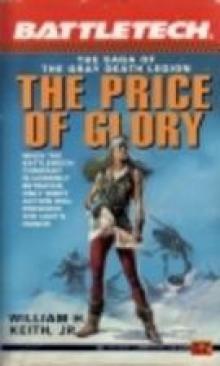 The Price of Glory
The Price of Glory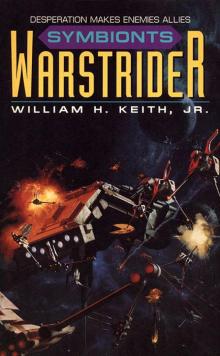 Symbionts
Symbionts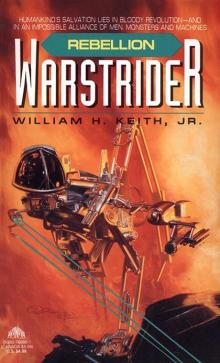 Rebellion
Rebellion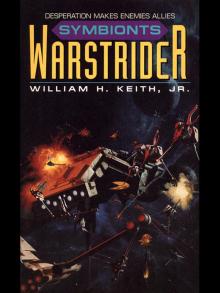 Warstrider 04 - Symbionts
Warstrider 04 - Symbionts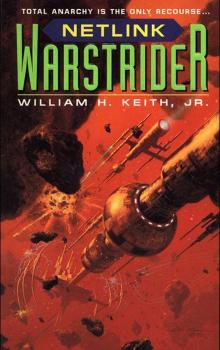 Netlink
Netlink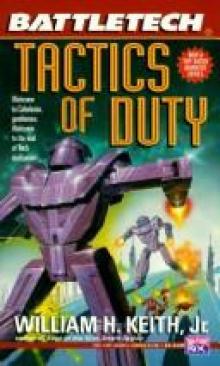 Tactics of Duty
Tactics of Duty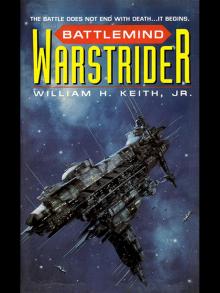 Warstrider 06 - Battlemind
Warstrider 06 - Battlemind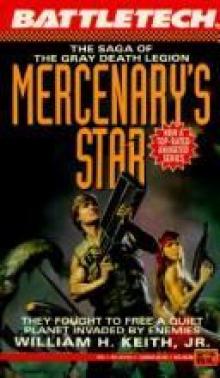 Mercenary's Star
Mercenary's Star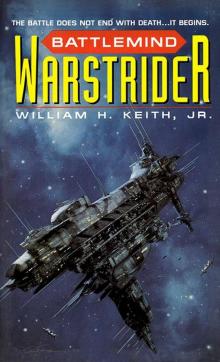 Battlemind
Battlemind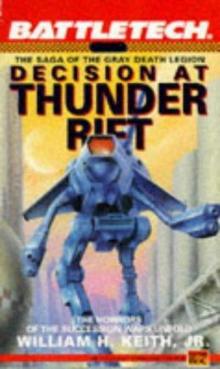 Decision at Thunder Rift
Decision at Thunder Rift Jackers
Jackers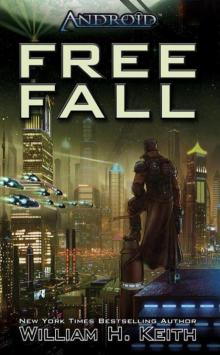 Android: Free Fall
Android: Free Fall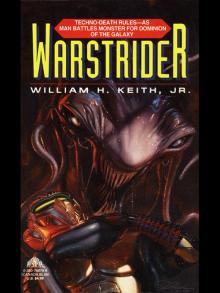 Warstrider 01 - Warstrider
Warstrider 01 - Warstrider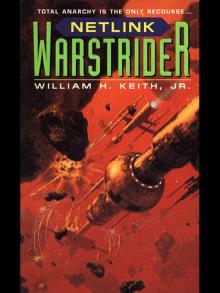 Warstrider 05 - Netlink
Warstrider 05 - Netlink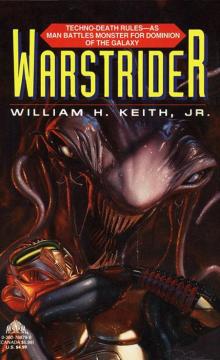 Warstrider
Warstrider